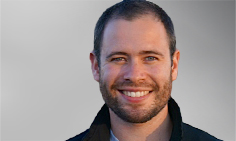THE first public display of general anaesthesia was given in 1846 by William Morton at the Massachusetts General Hospital, in Boston. The patient’s name was Edward Abbot.
Abbot was said to have “sunk into a state of insensibility”. The surgeon John Warren later wrote that Abbot “did not experience any pain at the time, although aware that the operation was proceeding”.
Abbot was perhaps, the first documented case of accidental awareness during general anaesthesia (AAGA).
Warren supposedly declared at the end of the demonstration: “Gentlemen, this is no humbug”. Along with the declining use of the word humbug, a lot has changed in anaesthesia since 1846.
Yet, for many patients, fear of complications under anaesthesia remains a significant source of anxiety. For more than half of patients, the thought of being put under for surgery causes anxiety from the moment the need is mentioned to the time they climb onto the operating table.
Perhaps part of the reason for this is that for a significant number of patients, the first time that they meet an anaesthetist is moments before they are to confront their fear.
One such patient sticks vividly in my mind. It was an ordinary morning for me, as an anaesthesia registrar, preparing for a routine surgical list.
It was anything but an ordinary morning for the patient. She was terrified. Visibly shaking and grasping the side rails of her hospital trolley, I asked what was making her so frightened.
Her reply astounded me. When told of her need for surgery, she had turned to Dr Google, as she had never had an anaesthetic before. What she found fanned the embers of a niggling but contained fear of waking up during surgery — and she was now convinced this would be her fate.
Not once had a doctor spoken to her about the anaesthetic in the lead up to her surgery.
This patient fell victim to the unregulated, popular drivel on the internet regarding health care in general, and anaesthesia specifically, available at our patient’s fingertips.
Like many fears, the patient’s started with a few ounces of truth that were then amplified by imagination and misinformation.
Many patients don’t have access to quality information — in the form of a conversation with an anaesthetist — until in the preoperative holding bay. By that time, they are likely to have watched the film Awake and read every pop-culture discussion-board, so they are in no state to be reassured.
If GPs and surgeons recognise preoperative anxiety in their patients who are preparing for surgery, and are armed with the facts for an informed discussion, it might just make things less frightening on the day.
The fact is that serious anesthesia complications, including death and awareness, are rare.
Awareness, while not the only thing patients get anxious about, remains a real and common concern for anaesthetists, as it is for patients.
The risk of AAGA is estimated to be very low. Quantifying that risk with up-to-date information is the sole focus of the joint Royal College of Anaesthetists and Association of Anaesthetists of Great Britain and Ireland’s 5th National Audit Project (NAP5). The results of NAP5 are expected in early 2014.
Current evidence suggests that the risk of awareness is between 1:142 and 1:1000. This is rare, but common enough to be taken very seriously.
And it is taken seriously.
Patients have a medically trained, specialist anaesthetist present for the duration of every general anaesthetic, making Australia among the safest places in the world to be anaesthetised.
For my patient, despite her initial fears, the anaesthetic and surgery went well. She suffered none of the things that had frightened her. Yet, the fear of them had caused her to suffer unnecessarily pre-surgery.
For some people, no amount of information will assuage their fears. But perhaps, with early, quality information, most will only have to worry about counting backwards from 10.
Dr Simon Hendel is an anaesthetist.

 more_vert
more_vert